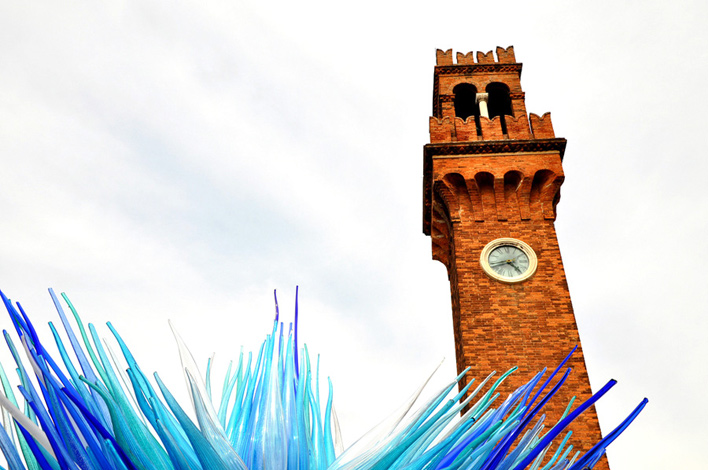Asylum and refuge of the refugees of the mainland to shelter from the barbarian invasions, Murano, whose ancient name is AMURANIUM, grew in prosperity and reached its splendor in the sixteenth century. It was always http://findviagrapills.com/ center that maintained administrative autonomy with respect to Venice enjoying a local administrative government and taking advantage of its ancient statutes from 1272 under the government of a podestà; until the fall of the Republic he had his own arengo; had the golden book for its original families, which enjoyed special privileges (the Venice police could not land on the island), coined the oselles, ie the medals / coins that were given to the main citizens (the name derives from the fact that in ancient times the Doge gave birds to the Lords, then replaced by these medals). The laws, even those of labor, were sanctioned by a mariegola (freshman – register, list of people registered in a certain category – of the artisan guilds) designed to prevent the spread of the secrets of glass processing: in exchange for secrecy the island and the islanders enjoyed special privileges. In its period of greatest prosperity the island had 17 churches, convents, hospices and academies. The island was chosen as an industrial site for the art of glass since 1291, both because it is located in the north of Venice and therefore the fumes of the furnaces did not pollute the city air and avoid the dangers of fires in the city center. The activity is very old but the real great impulse came when Venice came into contact with the Saracen workshops in Syria, between the eleventh and twelfth centuries. Itinerary * Piazzetta della colonna (boat stop) * Fondamenta dei Vereri that runs along the homonymous river: in ancient times there were the glass factories. Palazzo Contarini / Mazzolà from the 16th century - Gothic houses on the two shores of the shore * Ponte Ballarin: from here the government’s proclamations were proclaimed, there is still the lion on a column * Crossing the Fondamenta Manin bridge and on the right Viale Garibaldi (the target) with the Widows’ Hospice of the glassmakers, the F. M Piave theater (famous opera librettist: “I due Foscari”, “Rigoletto”, “Traviata”, all for Giuseppe Verdi) and the lighthouse. * On the left: Fondamenta di S. Giovanni Battista dei Battuti * On the left: Fondamenta Antonio Colleoni * Bottom: Campo S. Stefano, with the ancient tavern “Taverna di S. Stefano” * Ponte S. Pietro and homonymous church with Renaissance portal and bell tower of the early ‘500, the Vera da Pozzo is from 1348 * It takes back the foundations of the glassmakers, at n ° 139 there is a small eighteenth-century pharmacy, with paintings by Fontebasso (eighteenth-century painter between rococo and neoclassicism) * Ponte Vivarini, called “ponte lungo” from which you can see on the left the Palazzo da Mula, one of the largest Murano factories, with Gothic memories and 16th century restructuring * Made the bridge, on the right, Fondamenta Cavour and Fondamenta Giustiniani with the homonymous Palace, today the Glass Museum * You arrive in Campo S. Donato with the monumental Basilica of S.ti Maria e Donato, a 12th-century Venetian-Byzantine building, a little later than S. Marco. Founded perhaps in the VII and dedicated to St. Maria, from 1125 was added the title of S. Donato following the transport of relics from Kefalonia. The date of 1140, marked on the mosaic floor, indicates the completion of the church. It was restored between 1858 and 73, recently brought back to its original form. The hexagonal apse with false arcade with twin columns and upper gallery is one of the highest examples of arch. Venetian-Byzantine. The façade has a basilical form of Ravenna origin. The interior has a basilica plan with three naves, divided by 5 columns with Corinthian / Byzantine capitals. The ceiling is wooden with a “ship’s hull”. The floor has a mosaic with marble and polychrome glass paste with ornamental motifs and figurations of symbolic bestiary: on the right between the 2nd and 3rd columns two roosters support a fox: a symbology of the Vigilance that triumphs over the Astuzia. It dates back to 1140, so it is coeval with that of S. Marco. In the middle wheel the inscription indicates “Anno Domini Millesimo Centesimo Quadragesimo. First. Septembri canteens. Fifth Indication. In Nomine Domini Our Jesus Christi. In the apse, the Byzantine apsidal basin is preserved, with the Virgin alone, in an Orante form (standing, with open arms and hands facing the sky). The CAMPANILE is a square tower with three sections. * We cross the Ponte S. Donato * And we go on Fondamenta Navagero, from the name of a historian-humanist scholar whose gardens were full of exotic plants, one of the first botanical collections of Europe, meeting of the Venetian nobles for the readings of the classics. From here you can take the boat back to Venice.


 English
English Italian
Italian